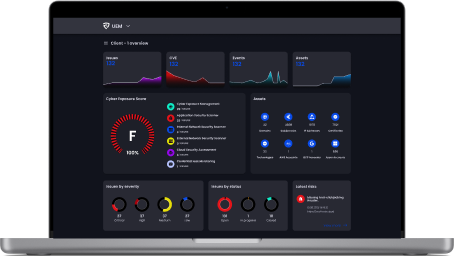HTTP Request Smuggling
How HTTP Request Smuggling Works
HTTP Request Smuggling typically involves crafting HTTP requests that are interpreted differently by the front-end server (such as a proxy or load balancer) and the back-end server. These inconsistencies can cause the front-end server to misinterpret where one HTTP request ends and the next one begins, leading to the back-end server processing part of the request as a separate and new request.
This can be achieved using various techniques, such as manipulating Content-Length headers, using Transfer-Encoding headers, or a combination of both to create overlapping or ambiguous requests.
HTTP Request Smuggling Examples
- CL.TE (Content-Length vs. Transfer-Encoding)
- TE.CL (Transfer-Encoding vs. Content-Length)
- CL.CL (Content-Length vs. Content-Length)
- TE.TE (Transfer-Encoding vs. Transfer-Encoding)
1. CL.TE (Content-Length vs. Transfer-Encoding)
Explanation: This type of HTTP request smuggling occurs when the front-end server interprets the request based on the Content-Length header, while the back-end server uses the Transfer-Encoding header, leading to different interpretations of where the request ends.
Request Example:
POST / HTTP/1.1
Host: example.com
Content-Length: 15
Transfer-Encoding: chunked
0
POST /malicious HTTP/1.1
Host: example.com
Content-Length: 13
malicious_payload
Response: The front-end server might interpret the request as ending after the first Content-Length, forwarding the rest to the back-end server. The back-end server processes the chunked part as a new request.
HTTP/1.1 200 OK
...
(The back-end server may respond to /malicious request, indicating the smuggling was successful.)
2. TE.CL (Transfer-Encoding vs. Content-Length)
Explanation: This type occurs when the front-end server processes the request as chunked (due to the Transfer-Encoding header), but the back-end server processes it as a fixed-length request (due to the Content-Length header)
Request Example:
POST / HTTP/1.1
Host: example.com
Transfer-Encoding: chunked
Content-Length: 6
1
Z
POST /malicious HTTP/1.1
Host: example.com
Content-Length: 13
malicious_payload
Response: The front-end server processes the chunked part, while the back-end server reads it based on Content-Length, causing the smuggled request to be processed.
HTTP/1.1 200 OK
...
(The back-end server may respond to the /malicious request.)
3. CL.CL (Content-Length vs. Content-Length)
Explanation: This type arises when an attacker sends a request with multiple Content-Length headers. The front-end and back-end servers might use different headers to determine the length of the request, causing a discrepancy.
Request Example:
POST / HTTP/1.1
Host: example.com
Content-Length: 13
Content-Length: 5
G
POST / HTTP/1.1
Host: example.com
Content-Length: 13
malicious_payload
Response: The front-end server might use one Content-Length header while the back-end uses another, causing the smuggled request to be interpreted separately.
HTTP/1.1 200 OK
...
(The back-end server may respond to the /malicious request.)
4. TE.TE (Transfer-Encoding vs. Transfer-Encoding)
Explanation: This type involves multiple Transfer-Encoding headers where the front-end and back-end servers handle chunked encoding differently.
Request Example:
POST / HTTP/1.1
Host: example.com
Transfer-Encoding: chunked
Transfer-Encoding: identity
0
POST /malicious HTTP/1.1
Host: example.com
Content-Length: 13
malicious_payload
Response:
The front-end and back-end servers may interpret the Transfer-Encoding headers differently, leading to the smuggled request being processed.
HTTP/1.1 200 OK
...
(The back-end server may respond to the /malicious request.)
Impacts of HTTP Request Smuggling
HTTP Request Smuggling vulnerabilities can have severe impacts on the security and functionality of web applications:
Data Exposure: Attackers can access sensitive information by manipulating the request sequence, potentially retrieving unauthorized data.
Session Hijacking: By injecting malicious requests, attackers can hijack user sessions and gain unauthorized access to user accounts.
Cache Poisoning: Attackers can poison web caches by smuggling malicious responses, leading to the delivery of malicious content to users.
Cross-Site Scripting (XSS): Smuggled requests can inject malicious scripts into web pages, causing XSS attacks.
Unauthorized Actions: Attackers can perform actions on behalf of authenticated users, such as modifying or deleting data.
Remediation of HTTP Request Smuggling
To effectively mitigate HTTP Request Smuggling vulnerabilities, organizations should implement the following measures:
Strict Header Validation: Implement strict validation of HTTP headers, ensuring that only a single Content-Length or Transfer-Encoding header is accepted.
Consistent Parsing Logic: Ensure that all devices in the HTTP request chain (proxies, load balancers, servers) have consistent parsing logic for HTTP requests.
Use of Secure Protocols: Prefer secure protocols and configurations that reduce the risk of header injection and request manipulation.
Monitoring and Logging: Implement comprehensive logging and monitoring to detect and respond to suspicious HTTP request patterns that may indicate smuggling attempts.
Conclusion
HTTP Request Smuggling vulnerabilities pose significant risks by allowing attackers to manipulate HTTP requests and gain unauthorized access to web applications. By understanding the mechanisms behind these attacks and implementing robust security measures, organizations can protect their web infrastructure from these sophisticated threats. Regular security testing, strict header validation, and consistent parsing logic across all devices are crucial steps in mitigating the risks associated with HTTP Request Smuggling.
Ready to see for yourself?
Test drives all platform features for yourself. No commitment and No credit card!




.svg)
.svg)
.svg)
.svg)



.svg)
.svg)
.svg)
.svg)
.svg)
.svg)
.svg)
.svg)

